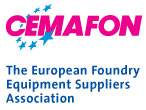You are here: > Technical Issues
> General Technical Information
| ||
General InformationATEX DirectiveFoundry machinery is in general not intended for the use in potentially explosive atmospheres. A potentially explosive atmosphere exists when a mixture of air gases, vapours, mists, or dusts combine in a way that can ignite under certain operating conditions. The ATEX Directive 94/9/EC on equipment and protective systems intended for use in potentially explosive atmospheres defines the minimum technical requirements and conformity assessment procedures, to be applied before equipment is placed on the EU market. The new ATEX Directive 2014/34/EU on equipment and protective systems intended for use in potentially explosive atmospheres is aligned with the “New Legislative Framework” and is applicable since April 20, 2016. A set of guidance documents, approved by the formal ATEX Committee, is available to assist those who need to apply the Directive. These resulted from cooperation between various stakeholders. The fourth edition of the Guidelines on the application of Directive 94/9/EC was issued in September 2012 and updated in December 2013. A guide for the new ATEX Directive 2014/34/EU is currently under development. CE Marking ProcessCE marking is the final stage of the conformity assessment process as specified in the relevant Directive for the product (e. g., Machinery Directive). Within the context of the European New Approach Directives this is the process by which persons can legally place safe and compliant products onto the European market (or bring them into use) for the first time. The conformity assessment process (sometimes referred to as the CE marking process) is concerned with:
Most new products must be supplied to end users with a certificate called a Declaration of Conformity which must relate to the particular product placed on the market. This document should declare key information, including:
Additionally, market surveillance authorities, must presume that CE marked products, accompanied by a Declaration of Conformity comply with the provisions of the Directive(s) mentioned, unless they have evidence to the contrary (for example by examining or testing the product). | Members Log-in | |



